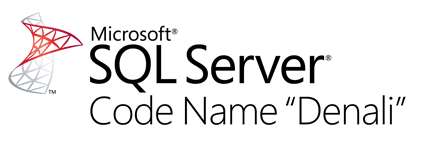| SQL Server releases (Denali) available |
| Written by Kay Ewbank | |||
| Thursday, 14 July 2011 | |||
|
The latest pre-release version of Denali is now available including the SQL Server Developer Tools codenamed Juneau. In addition Server 2008 R2 SP1 has also been released If you want to keep ahead in the world of SQL Server Microsoft has just released more goodies although you may have to work your way around several download links to get all the features you want to test. Community Technology Preview 3 (CTP 3) of SQL Server Denali, in 32-bit and 64-bit windows versions can be downloaded here: https://www.microsoft.com/betaexperience/pd/SQLDCTP3CTA/enus/default.aspx You can find out the full list of improvements to the new CTP here (http://msdn.microsoft.com/library/bb500435(SQL.110).aspx), but the list is fairly short. Scalability and performance have been improved with addition of a new data warehouse query acceleration feature that’s based on a new type of index called the columnstore. The documentation claims this can, when combined with enhanced query processing features, improve data warehouse query performance by hundreds to thousands of times in some cases. CTP also has better handling for high availability with the enabling of ‘AlwaysOn’ Availability Groups and ‘AlwaysOn’ failover clusters. Full text search options have been revamped with the ability to configure indexes to support property-scoped searching on properties, such as Author and Title, which are emitted by IFilters such as those of the Microsoft Office 2007 document types. Another search improvement is the ability to customize a proximity search by using the new custom NEAR option of the CONTAINS predicate or CONTAINSTABLE function. The SQL Server 2011 CTP3 Feature Pack can be downloaded here: http://www.microsoft.com/download/en/details.aspx?id=26726 This includes tools and add-ons for SQL Server such as the Master Data Services Add-in for Excel, Report Builder, PowerPivot for Excel, Reporting Services for SharePoint, Transact SQL Language Services, ScriptDom and Compiler. The Feature Pack also includes the Data-Tier Application Framework that lets developers extract, build, deploy, upgrade, import, and export for data-tier applications in SQL Server and SQL Azure. SQL Server Compact 4.0 is also included in the Feature Pack. This is the free, embedded version of SQL Server that you can use for building ASP.NET websites and Windows desktop applications. The Feature Pack also includes JDBC, OLE DB, ODBC and PHP drivers, ADOMD.NET, connectors for SAP, Remote Blob Store, and PowerShell Extensions. If you’re interested in the Developer Tools (codenamed Juneau), they can (finally) now be downloaded here: http://msdn.microsoft.com/en-us/data/hh297027 Developer Tools is the bit you need to carry out database design work from within Visual Studio, including the creation and editing of database objects and data, and the execution of queries. If you’re familiar with the previous Visual Studio Database Projects, the new version has simplified project templates, support for SQL Azure and the new CTP 3 (Denali), and an offline/online table designer. Juneau gives you a single place where Business Intelligence Development Studio (BIDS), SQL Server Management Studio, and the database tools of Visual Studio can all be used together at last. One useful link you might want to check out is the list of deprecated features in Denali. These are features that will be removed in the next version of SQL Server, so you should stop using them now. You can read the list here: http://msdn.microsoft.com/en-us/library/ms143729(v=SQL.110).aspx While the headline news is all about Denali and Juneau, those of you at the coalface might be more excited by the news that SQL Server 2008 R2 SP1 has also been released (http://www.microsoft.com/download/en/details.aspx?id=26727). This is bristling with ‘issue fixes and supportability enhancements’, and also offers Dynamic Management Views, improved query performance, better database upgrades via Data-tier Application Component Framework (DAC Fx); and the ability to control the amount of disk space PowerPivot uses.
|
|||
| Last Updated ( Thursday, 14 July 2011 ) |

